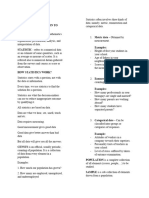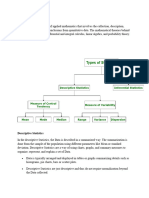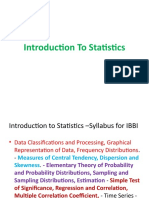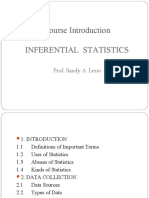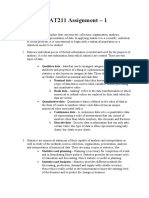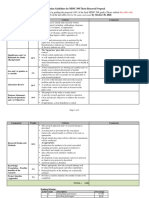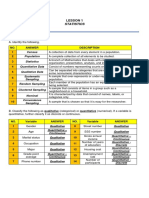0% found this document useful (0 votes)
51 views8 pagesStatistics Notes For Final
The document outlines the types of statistics, including descriptive and inferential statistics, as well as primary and secondary data. It also explains concepts such as frequency distribution, histograms, pie charts, and common problems in statistics. Additionally, it describes variables and the weighted mean, providing examples for clarity.
Uploaded by
Farhan AliCopyright
© © All Rights Reserved
We take content rights seriously. If you suspect this is your content, claim it here.
Available Formats
Download as PDF, TXT or read online on Scribd
0% found this document useful (0 votes)
51 views8 pagesStatistics Notes For Final
The document outlines the types of statistics, including descriptive and inferential statistics, as well as primary and secondary data. It also explains concepts such as frequency distribution, histograms, pie charts, and common problems in statistics. Additionally, it describes variables and the weighted mean, providing examples for clarity.
Uploaded by
Farhan AliCopyright
© © All Rights Reserved
We take content rights seriously. If you suspect this is your content, claim it here.
Available Formats
Download as PDF, TXT or read online on Scribd
/ 8











